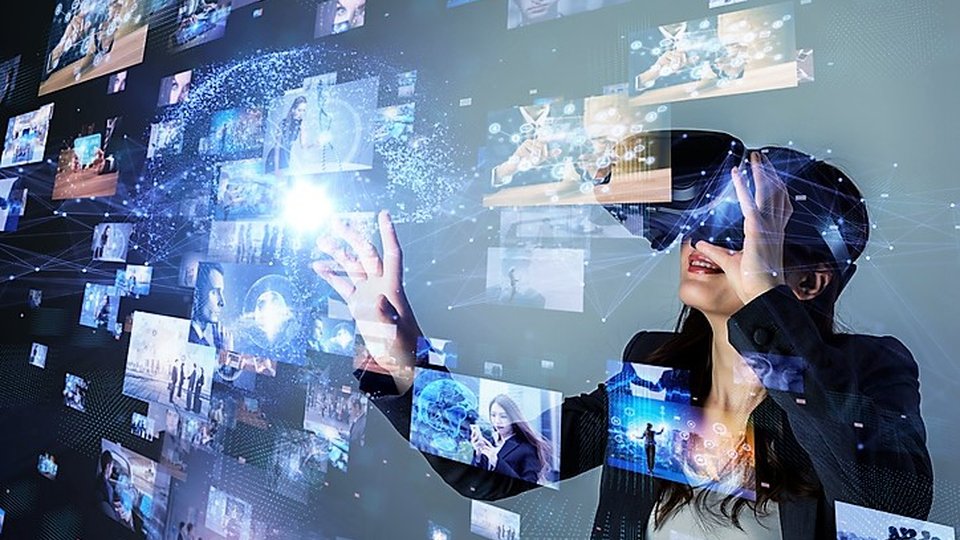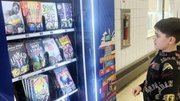Commentary
The ‘new normal’: a revolution in sanitation and frictionless interaction
A host of technologies have emerged in the location based entertainment world in the post pandemic era to improve sanitation and guest interaction.

September 7, 2020 by Kevin Williams
The "new normal" has seen the erection of partitions for "physical distancing," in location based entertainment, the employing of new cleaning and sanitizing procedures and the abandonment of certain activities. We are also seeing the emergence of new technologies to address the problems faced. One of these is regarding "frictionless" guest interaction.
Developer Ultraleap (comprising the "Leap Motion" and "Ultrahaptics" product ranges) recently announced an installation of their technology for the '"Cinema" sector. In an agreement, CEN Media Group has signed with Ultraleap to develop and install a brand new interactive digital signage offering standard display advertising and touchless interactive content.
The system will be placed in 10 cinema locations managed by CEN. The kiosks employ hand tracking and "virtual touch" haptics, making interaction natural, safe and effortless, and so voiding the need for excessive cleaning procedures. Content for this gesture-controlled kiosk is being developed in partnership with Ultraleap and AdMobilize.
AR enhances 'Edcutainment'
The expansion of immersive interactives, like augmented reality solutions, has allowed venues to offer richer "Edutainment" experiences. One such example can be found at Brevard Zoo in Melbourne, Florida. Their exhibit, "Rainforest Revealed," featured a frictionless AR experience that educates guests on the role pacu fish play in maintaining a healthy ecosystem.
Falcon's Creative Group developed this unique presentation, which utilizes advanced techniques to achieve a high level of flexibility. A designated operator presents the AR experience to visitors through a tablet PC, able to control the timing of all animations, events and other elements in the real-time AR content. Visitors can watch the action unfold on a large monitor that is situated above an actual pacu habitat.
The operator provides an interactive and custom-tailored demonstration, with the ability to trigger various fun facts within the virtual world by selecting one of several info beacons on the tablet. This kind of experience should see growth in a post-lockdown world, as venues look to touch-free solutions to draw in larger crowds.
Mixed reality enters the fray
Mixed reality has also seen new development, with companies such as Valo Motion announcing their latest release, with their AR-based climbing game called "Hullaballoon." The company's projection mapped, tracked climbing wall system adds this new game to the library of their "ValoClimb" platform. It offers between one and four players the chance to take part in a balloon popping game, trying to collect a high score.
Valo has developed the game to work with a touchscreen operator feature and scores can be shared quickly via the venue and guest social media app. This kiosk also allows the game to be customized for party events and promotions. This projection-based experience is another aspect of the MR scene that offers a unique and compelling game experience without the need for headsets.
Radiation based disinfection makes waves
One of the emerging aspects of the post-COVID-19 landscape in the deployment of entertainment is the level of cleaning and sanitation which is being employed to ensure a safe and reliable experience. One of the new mediums that has been employed (and much reported on), is that of Ultraviolet-C lighting radiation-based disinfection. With its ability to clean the complicated structure of VR headsets, the market is growing for this deployment.
One of the first to have released a UV-C platform for VR headsets was Cleanbox Technology, and the company had already established a foothold into the LBE VR scene long before the global health crisis. Recently, the company has expanded their cooperation in this scene, having partnered with HOLOGATE and their Hygiene Standard, and it was announced that Cleanbox had also been selected by other manufacturers of LBE VR hardware for deployment with their systems.
But there are other new entrants offering UV-C. In China, manufacturer LEKE VR has released a simple box enclosure for VR headset cleaning (called the "LEKE VR Sterilization Box"), though information on its Western sales plans away from Alibaba are limited.
Meanwhile in Europe, Netherlands-based The VR Room revealed that they have developed their own solution. Called the "UV-C Smart Box," the solution has been specially configured to the unique needs of VR arcade operators, and the manufacturers are receiving ISO certification for the ability to sell such a platform.
Another new entrant into this space is SaniBoXX. The Texas-based company had already developed a UV-C enclosure for the decontamination of racing helmets — favoring using a short wavelength UV-C UVGI light at 254nM. The company created their "RS-12," "RS-10," "RS-4" and "RS-1" cabinets for treating that number of helmets against the SARS-CoV virus base. These achieved international recognition, with over 100 units already in operation. The company has taken this proven system and scaled it to work for VR headsets — working with a well-known VR manufacturer, towards launching their new system in the coming weeks.
Immotion Group, the U.K.-based immersive entertainment group, has developed a portable electronic and accessories disinfection platform using a UV-C lighting enclosure. The product was originally designed for the sole purpose of cleansing VR headsets for its partner locations, but following numerous external commercial inquiries, the company has decided to sell the cabinets to third party companies under the Uvisan.com brand name. Chichester University has already purchased four cabinets to protect sensitive equipment against COVID-19 infection.
The Uvisan wheeled cart configuration offers a simple and robust means for facilities to disinfect numerous devices — which can also include head mounted displays and other VR and AR units (able to accommodate 100 phones, 50 tablets or 30 convention VR headsets). The cart can also be used, during the disinfection process, to charge devices.
Along with these examples, several do-it-yourself projects have been crafted by VR arcade operators to address their own needs, hoping to pass muster, even without certification.
(Editor's note: Extracts from this blog are from recent coverage in The Stinger Report, published by KWP and its director, Kevin Williams, the leading interactive out-of-home entertainment news service covering the immersive frontier and beyond.)
About Kevin Williams
Along with advisory positions with other entrants into the market he is founder and publisher of the Stinger Report, “a-must-read” e-zine for those working or investing in the amusement, attractions and entertainment industry. He is a prolific writer and provides regular news columns for main trade publications. He also travels the globe as a keynote speaker, moderator and panelist at numerous industry conferences and events. Author of “The Out-of-Home Immersive Entertainment Frontier: Expanding Interactive Boundaries in Leisure Facilities,” the only book on this aspect of the market, with the second edition scheduled for a 2023 release.







